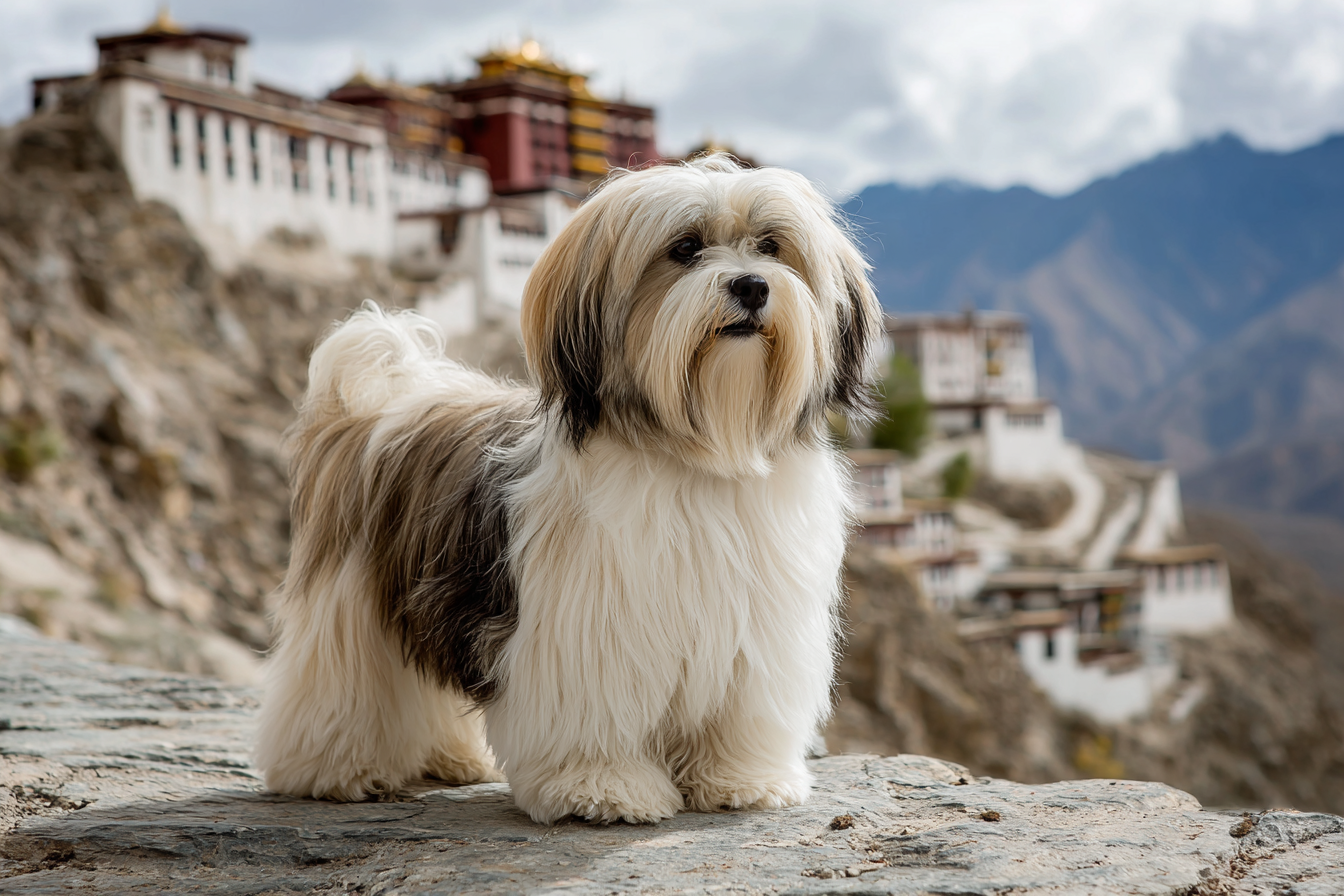The Lhasa Apso is a breed that exudes charm and mystery, captivating dog lovers around the world with its fluffy coat and spirited personality. But beyond its adorable appearance lies a rich tapestry of history stretching back centuries to the remote and mystical land of Tibet. This enchanting dog has journeyed from ancient monasteries to royal palaces and eventually to the hearts of pet owners worldwide. Let’s embark on a fascinating journey to explore the history and origin of the Lhasa Apso, delving into its traditional roles, symbolism, and evolution as a beloved companion.
Origin in Tibetan Monasteries
The story of the Lhasa Apso begins high in the Himalayas, in the kingdom of Tibet. It is believed that these dogs have been bred for over a thousand years, with roots intertwined deeply within Tibetan culture and spirituality. Their name, “Lhasa Apso,” refers to the capital city of Tibet, Lhasa, and “Apso” is derived from the Tibetan language meaning “beard,” reflecting the breed’s distinctive long facial hair.
In Tibetan monasteries, Lhasa Apsos were cherished as faithful companions and watchdogs. Their keen senses and alert nature made them perfect guardians, able to sound the alarm at the approach of strangers or potential threats. These dogs rarely needed physical force; their mere presence and distinctive bark were enough to protect sacred temple grounds and possessions.
Traditional Roles and Symbolism
The Lhasa Apso’s importance in Tibetan society went far beyond its physical guarding duties. It was revered as a spiritual symbol, often considered a bringer of good luck and protection. Monks believed that these dogs possessed an almost mystical ability to ward off evil spirits, making them sacred guardians of homes and temples alike.
The breed’s compact size combined with a confident and sometimes aloof demeanor symbolized strength in small packages. They were often gifted to nobility and high-ranking monks, signifying status and trust. Art and sculptures in Tibet frequently featured Lhasa Apsos, underscoring their cultural and religious significance.
How the Breed Was Discovered by the West
For centuries, the Lhasa Apso remained confined to Tibet and its immediate surroundings, largely unknown to the outside world. It wasn’t until the early 20th century that Western explorers and British colonials traveling through the Himalayas encountered these charming dogs. Intrigued by their unique appearance and demeanor, some took Lhasa Apsos back to England where the breed began to garner attention.
Subsequently, the breed was introduced to Europe and the United States, where it quickly became a favorite among dog enthusiasts and breeders. The arrival of Lhasa Apsos on the Western stage sparked efforts to standardize the breed’s characteristics and appearance, laying the groundwork for its future as a popular companion dog.
Evolution of Breed Standards
With the Lhasa Apso’s entry into Western dog culture, formal breed standards began to develop. Organizations such as The Kennel Club in the UK and the American Kennel Club (AKC) in the US established guidelines to preserve the unique traits that made the Lhasa Apso special.
The breed standard emphasizes:
- A dense, flowing double coat that provides insulation against cold climates
- A distinctive face with a beard and expressive dark eyes
- A compact, sturdy frame with a tail that curls over the back
- A confident and independent temperament balanced with affection toward family
Over time, responsible breeding programs have ensured the preservation of these traits, maintaining the Lhasa Apso’s unique identity while adapting to the needs of modern pet owners.
Famous Lhasa Apsos in History
Throughout history, several Lhasa Apsos have gained notable recognition. One famous story involves Lhasa Apsos serving in the British royal court during the mid-20th century, where their charm and regal bearing won them admiration.
They’ve also appeared in art, literature, and cinema, often depicted as symbols of grace and loyalty. While not always front and center, their presence in notable households and cultural references highlights the breed’s enduring appeal.
Contributions to Other Breeds
The Lhasa Apso’s ancient lineage and distinct traits have occasionally contributed to the development of other dog breeds. Through selective breeding, elements of the Lhasa Apso’s coat texture, size, and temperament have been introduced into hybrid breeds to achieve particular looks or temperaments.
For example, crosses with breeds such as the Shih Tzu have led to hybrids that blend the Lhasa’s sturdiness and alertness with other desirable companion traits. While purebred Lhasa Apsos remain true to their Tibetan roots, their genetic legacy has had a subtle influence on canine variety worldwide.
Modern-Day Popularity
Today, the Lhasa Apso enjoys widespread popularity as a companion dog. Its moderate size, affectionate nature, moderate exercise needs, and unique appearance make it an ideal pet for families, singles, and seniors alike. The breed’s intelligence and alertness also carry on its ancient role as a vigilant watchdog, alerting owners to unusual activity without being overly aggressive.
Thanks to modern grooming techniques, their long coat remains manageable, allowing owners to enjoy the beautiful form of their dog with relative ease. This adaptability has helped the Lhasa Apso maintain its status as a cherished member of households across many countries.
The Lhasa Apso’s journey from the sacred temples of Tibet to living rooms worldwide is a testament to its timeless appeal and remarkable character. As both a symbol of ancient tradition and a beloved modern companion, the breed continues to charm dog lovers with its unique story and personality. Whether appreciated for its rich history or its delightful companionship, the Lhasa Apso’s roots run deep, carrying centuries of Tibetan spirit and love wherever it goes.







